โปรเจคนี้เป็น Personal ครับ ไปคนเดียวแบกไฟคนเดียว (หนักมาก 55+) ขึ้นรถทัวร์ไปเลย นั่งประมาณ 6.30 ชม. ลงที่ บขส.
และต่อรถเข้าไป อ.กระโพ อีก 1 ชม. ครับ
โดยหลักๆแล้วผมไม่ได้ต้องการไปถ่ายช้างเท่าไรครับ ผมอยากเน้นไปที่คนเลี้ยงช้างมากกว่า (ขนาดวันก่อนจะกลับมีลูกช้างคลอด ซึ่งน้อยคนนักจะได้เห็น ผมยังไม่ถ่ายเลยครับ) เพราะตั้งใจจะไปเรียนรู้ชีวิตคนที่นั้น และอยากคุยพบปะแลกเปลี่ยนทัศนคติ อยากรู้ว่าเขากินอยู่กันอย่างไร
ที่จริงผมเขียนไว้ใน blog ของผมไปแล้วครับยาวมากๆพร้อมกับรูปเพียบเลย แต่จะเอาลิงค์มาแปะก็จะผิดกฏ ผมเลยขออณุญาติ ก๊อปจาก blog ของผมมาวางนะครับ

ขอบคุณครับ
 Elephant People, Surin
Elephant People, Surin
September 24, 2014
Dear all, thanks for visiting my first story. This is also my very first travel trip alone! , I always want to travel and shoot interesting people around the world, by starting from my home, Thailand. I began to research about what place i should visit, and I decided to go to "Surin" this place is at the north-eastern of Thailand, around 450 kilometers or 6.30 hours driving from Bangkok, Surin is best known of its Elephant, jasmine rice, and silk, but people form all around the world came to visit the Elephant more than anything.
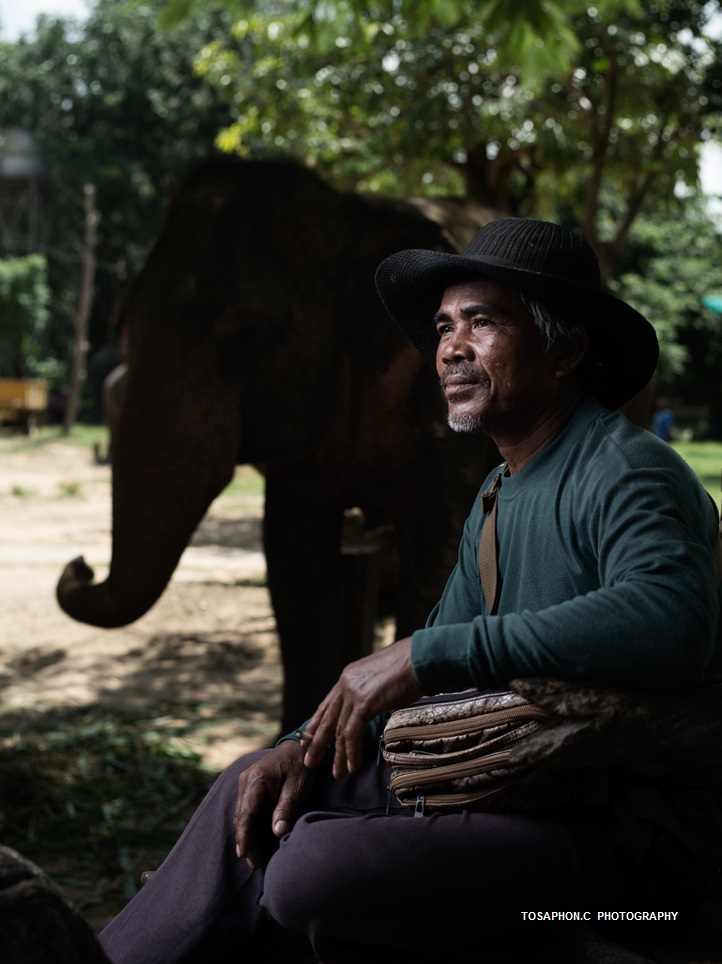
Fig.1
Surin people from the ancient time are mixed form Cambodia and Laos, this group of people are called "กูย" (Kui) or "ส่วย" (Suia) they speak mixed language (Cambodia,Laos,Thai) and their is no alphabet for which language they speak, they are also specialize in capturing wild elephant and train them to work, and perform. They rank from how many elephant they have captured, there are 3 separated ranks
1.หมอสะเดียง ( Mor sa deang )
2.หมอสะดำ ( Mor sa dum )
3.ครูบา ( Kru ba )
and don't ask me how to write the word in English, because i really don't know, haha. but the third rank is some kind of tribe elders, you have to capture more than 20 elephant, to earn this rank, which may take a life time !
But nowadays the hunt has been forbidden for more than 60 years. Sadly i din't meet the tribe elders because he was sick during my visit, ( he is 87 years old) but i had a long conversation with many elephant trainers, they are all Kui people too.
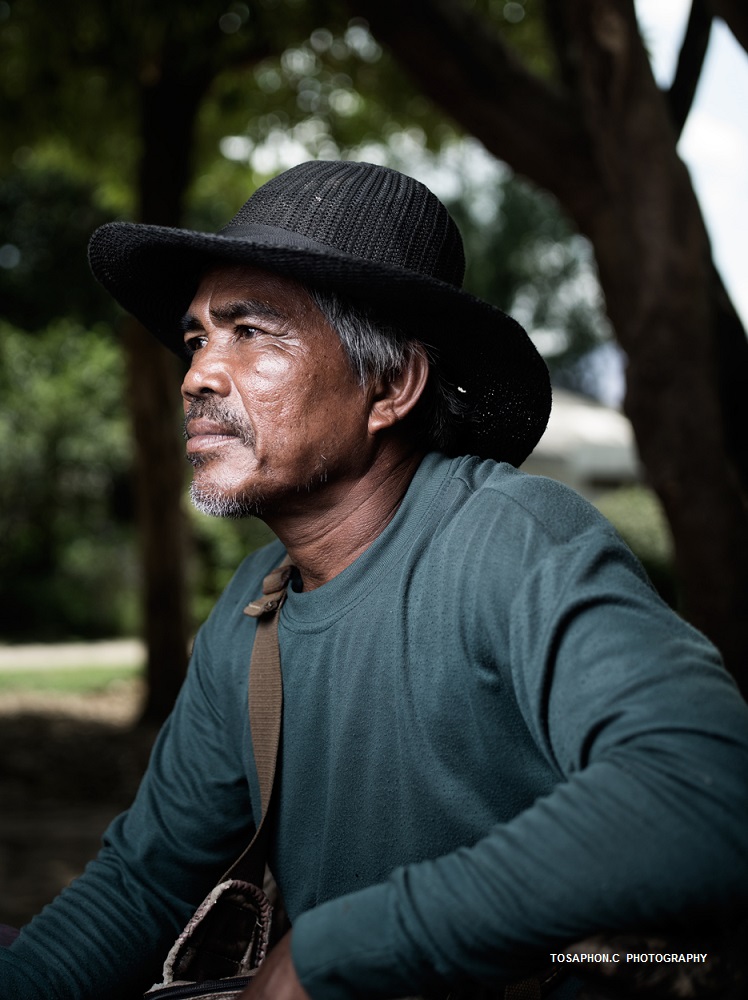
Fig.2
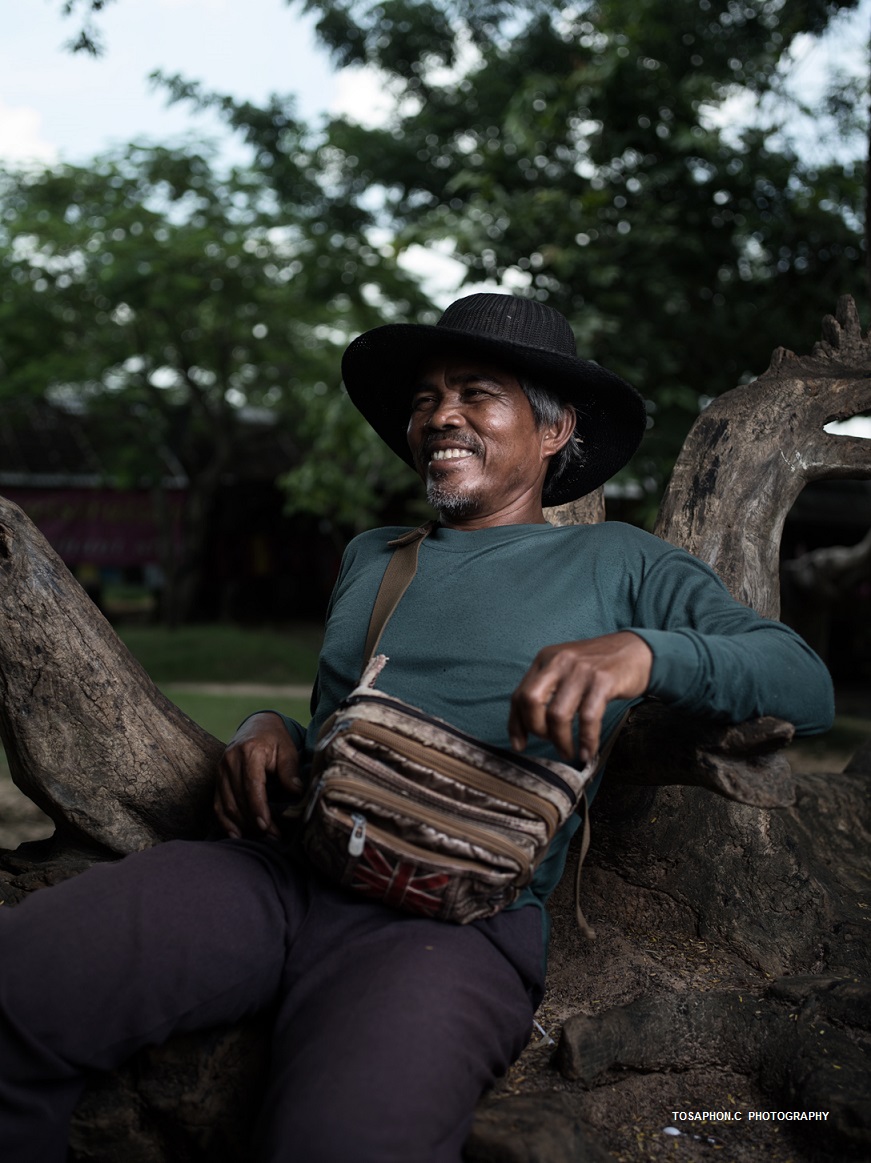
Fig.3
Meet "Ta Pud" ( Fig.1-3 ) He raises elephant since he was a kid, originaly born here. He traveled all over Thailand with his elephant, Pattaya, Phangnga, Samui, Chiangrai, Chiangmai, Bangkok and more, he said "Elephant are my life, my father raised them, and my grand farther as well". He traveled to perform shows and charged people for walking under and around the elephant for 59 Baht, Thai people believe this will give you good luck. right now he said "I will stay here the rest of my life, I belong here, I had travel enough."
Ta Pud also said raising an elephant are costly, they eat all day, and I really mean all day ! , if you can't find something for them to eat you have to buy it, which can cost a lot over time. They are also dangerous, yes ! , Ta Pud said lots of trainers got killed by their own elephant when the elephant are in "Rut" during that time elephant are very aggressive, the trainer must take them away before it happens and chains them very secure, Ta Pud said you will know when the time has come, they will bleed out the oil form their face and organ. Male can go rut for 2-4 months, female are less 1-3 months.
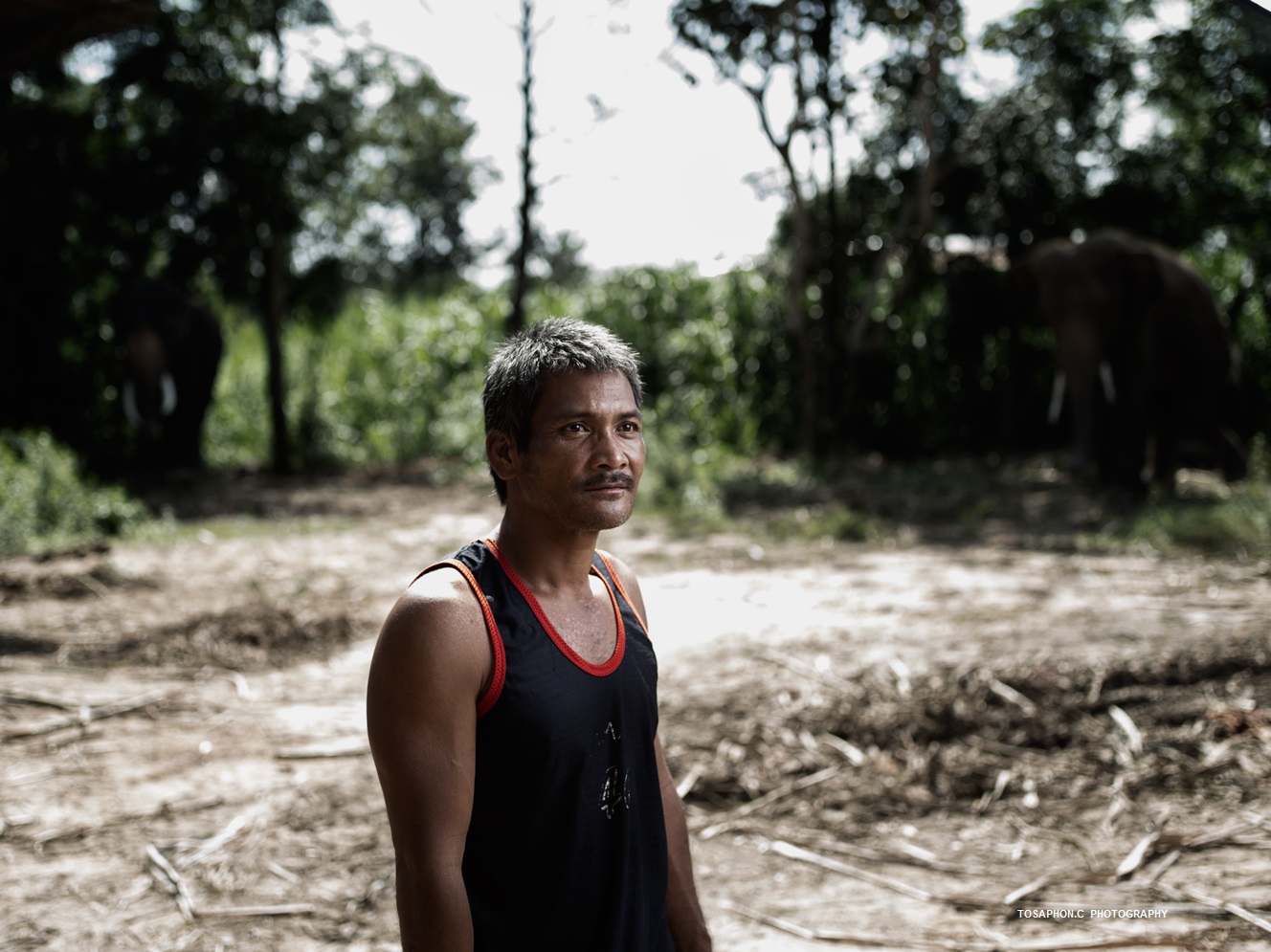
Fig.4
This is "Ta Meain" (Fig 4-6), He is know for the best elephant trainer in Surin, the wildest elephant will obey him like a dog after got trained with him.Ta Meain also born here in Surin, but traveled for work in many place. He used to sell cloth and food in Bangkok market for many years. Now he got back and lived in Surin, he has 5 elephant.
He said life in the city is cruel, everything you want you have to pay for it, when you open your eyes in the morning in the city you already need money, but not here he said. We grow rice, we grow what we want to eat, sometimes we go for fishing. He also said people in the city are hard to deal with, more than an elephant.
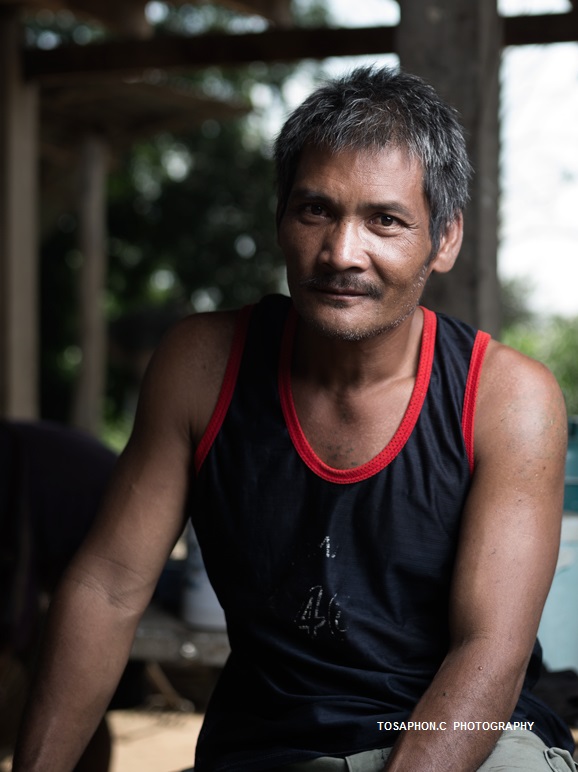
Fig.5
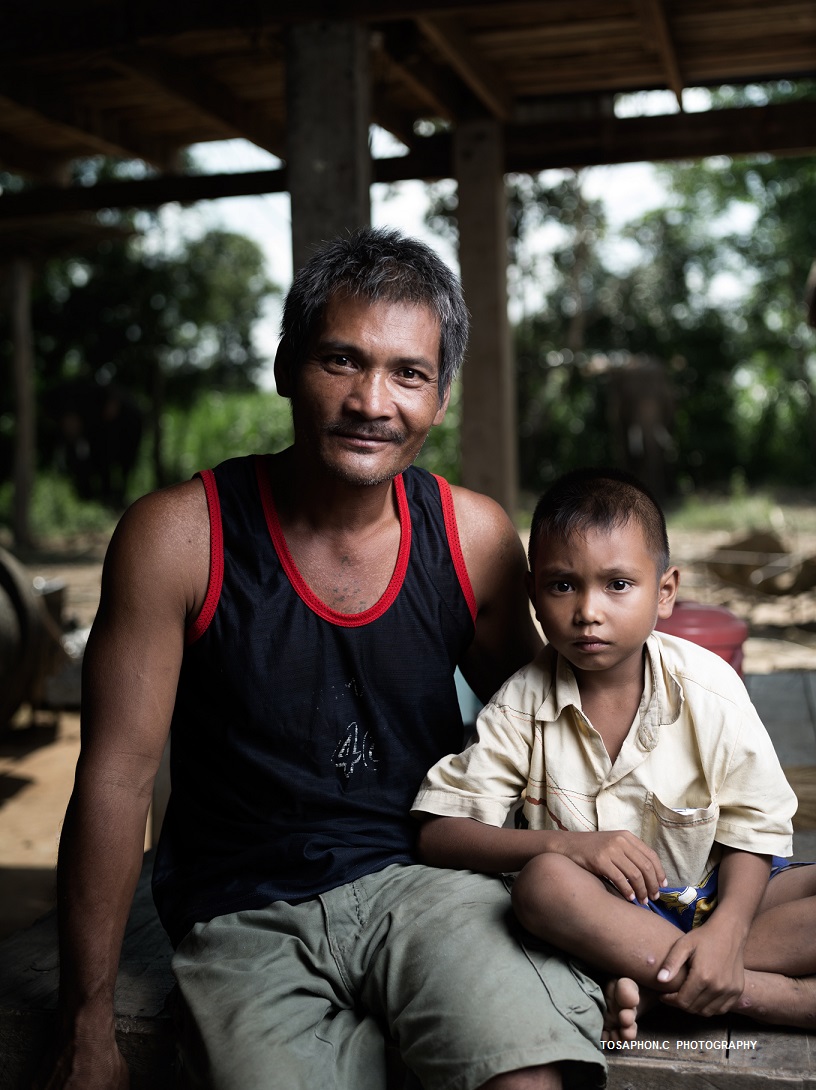
Fig.6
Elephant love to play in the water,(Fig7-10) because the weather here is very hot. Everyday the trainer took them to the river, they seem like a little kid playing and don't want to stop, haha. If the trainer doesn't come down with them, they won't come up easily.
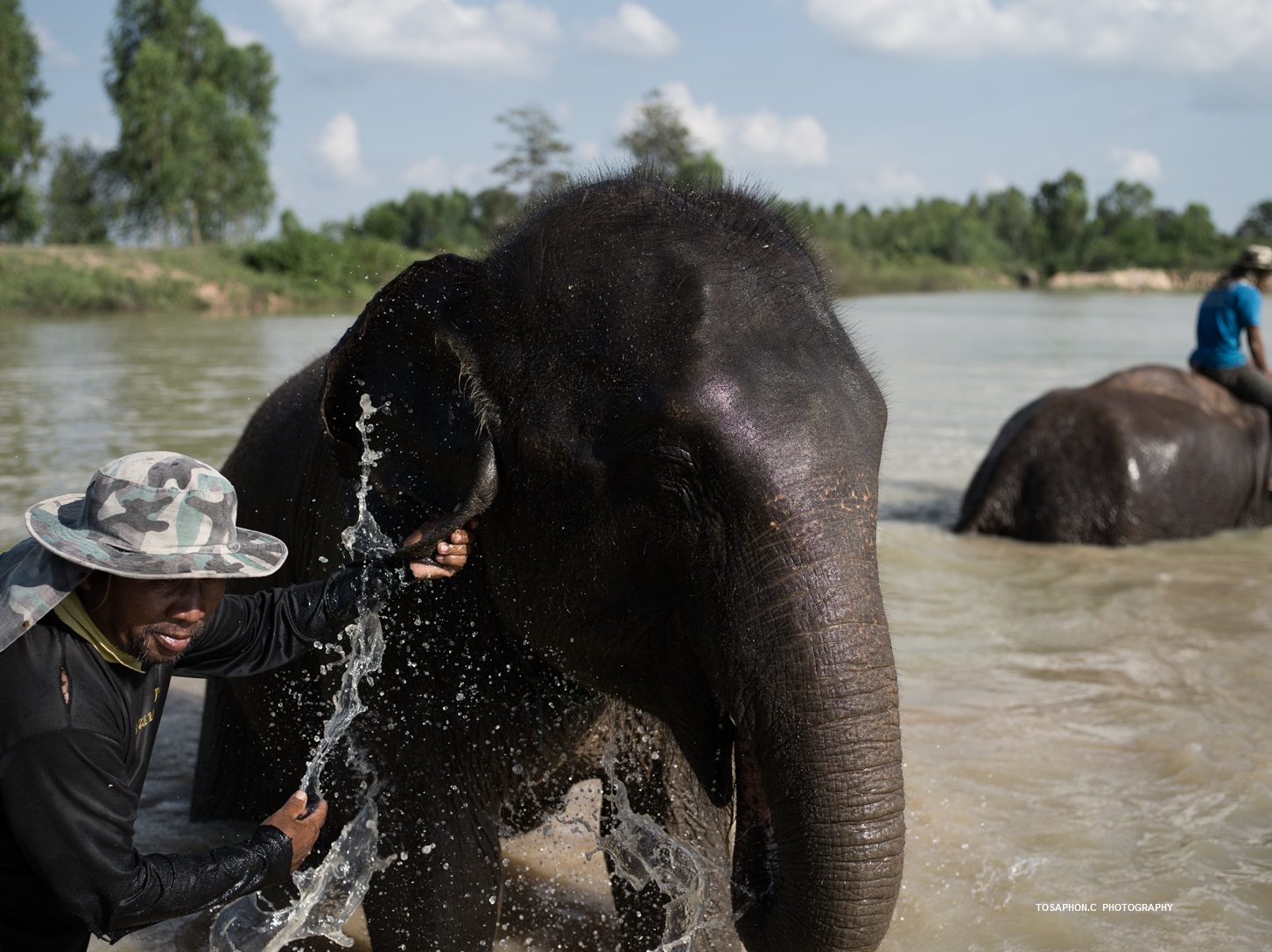
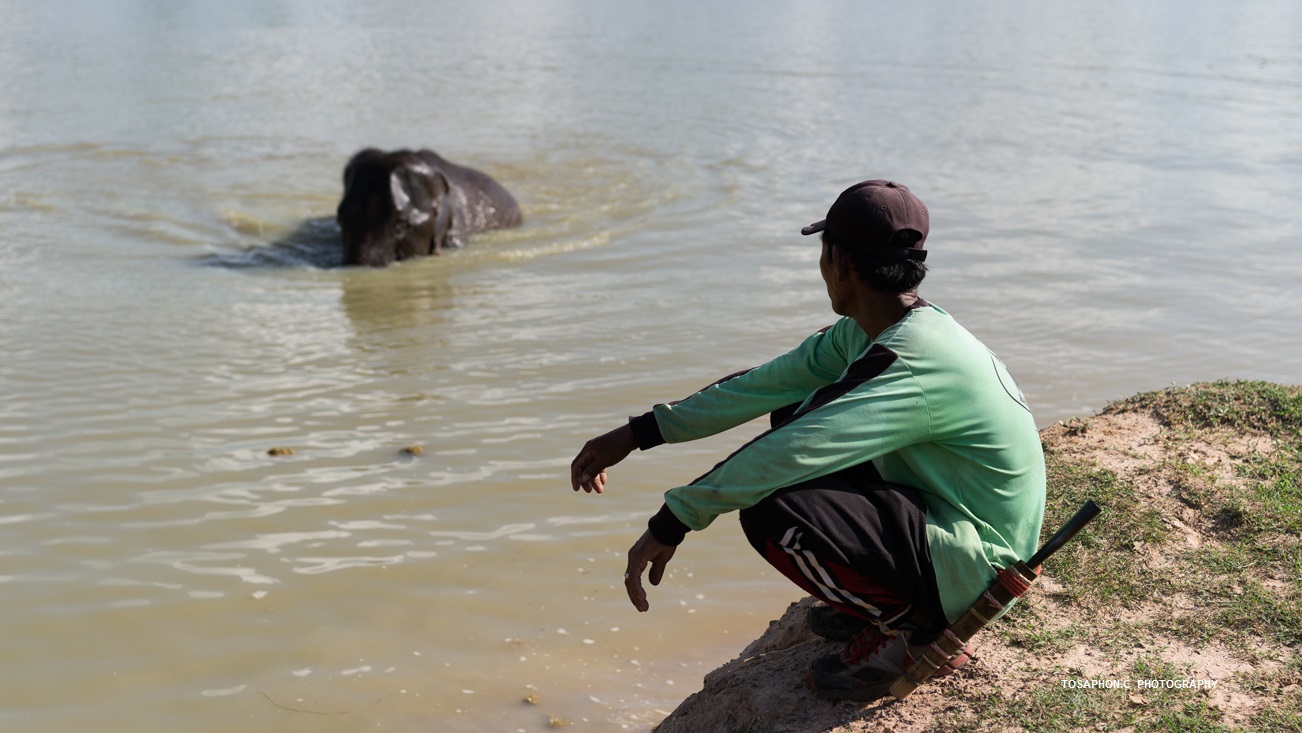
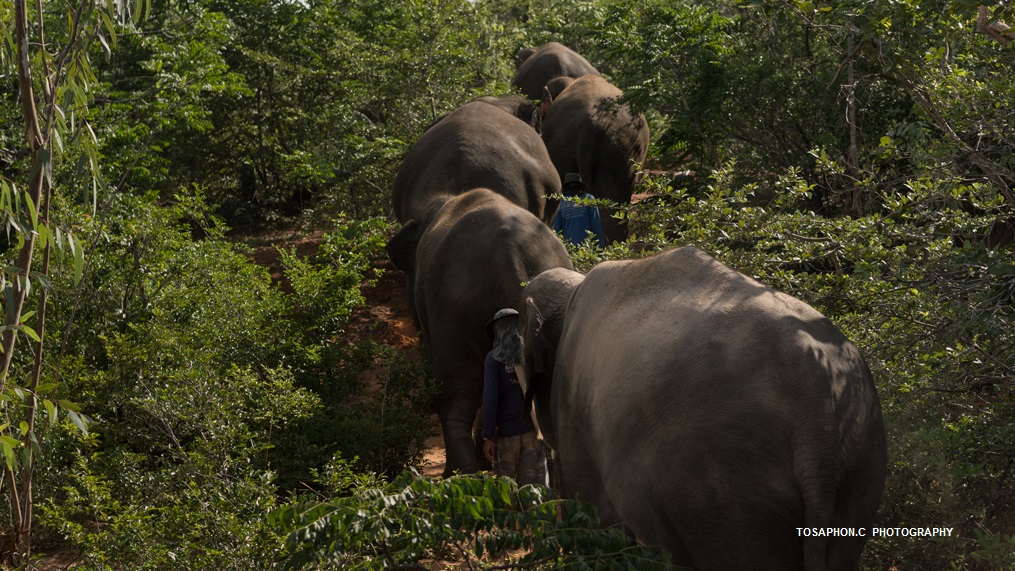
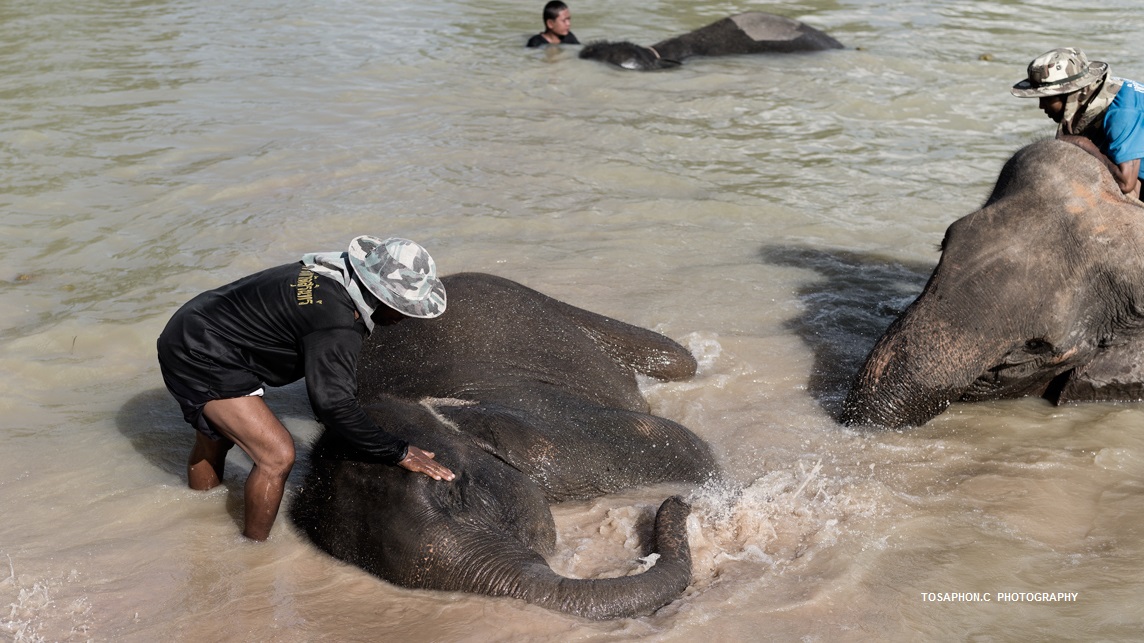
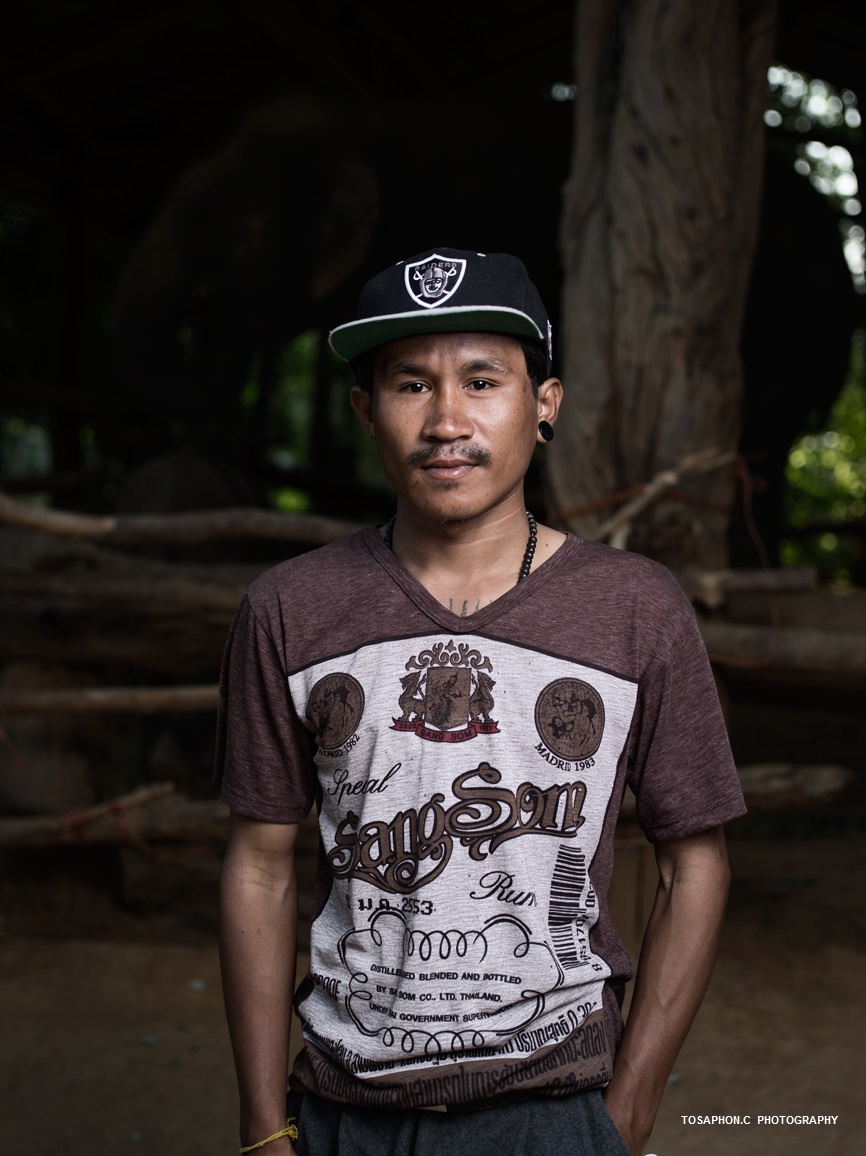
Fig.11
The new generation of Gui people dress differently from the elder (Fig 11-13), but the bound between elephant never seems to fade away. I didn't catch his name but he is around 25 years old from what I have been told, he said he grown up with an elephant, "they are like my family" he said.
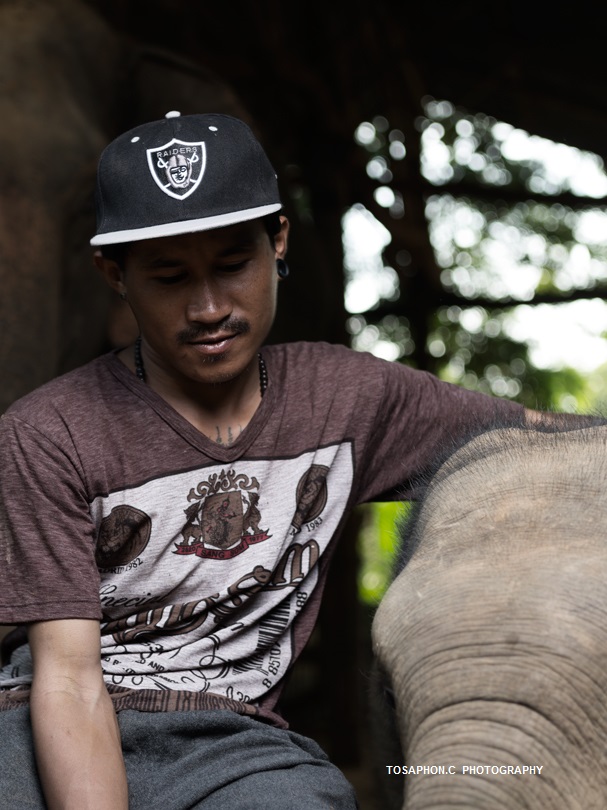
Fig.12
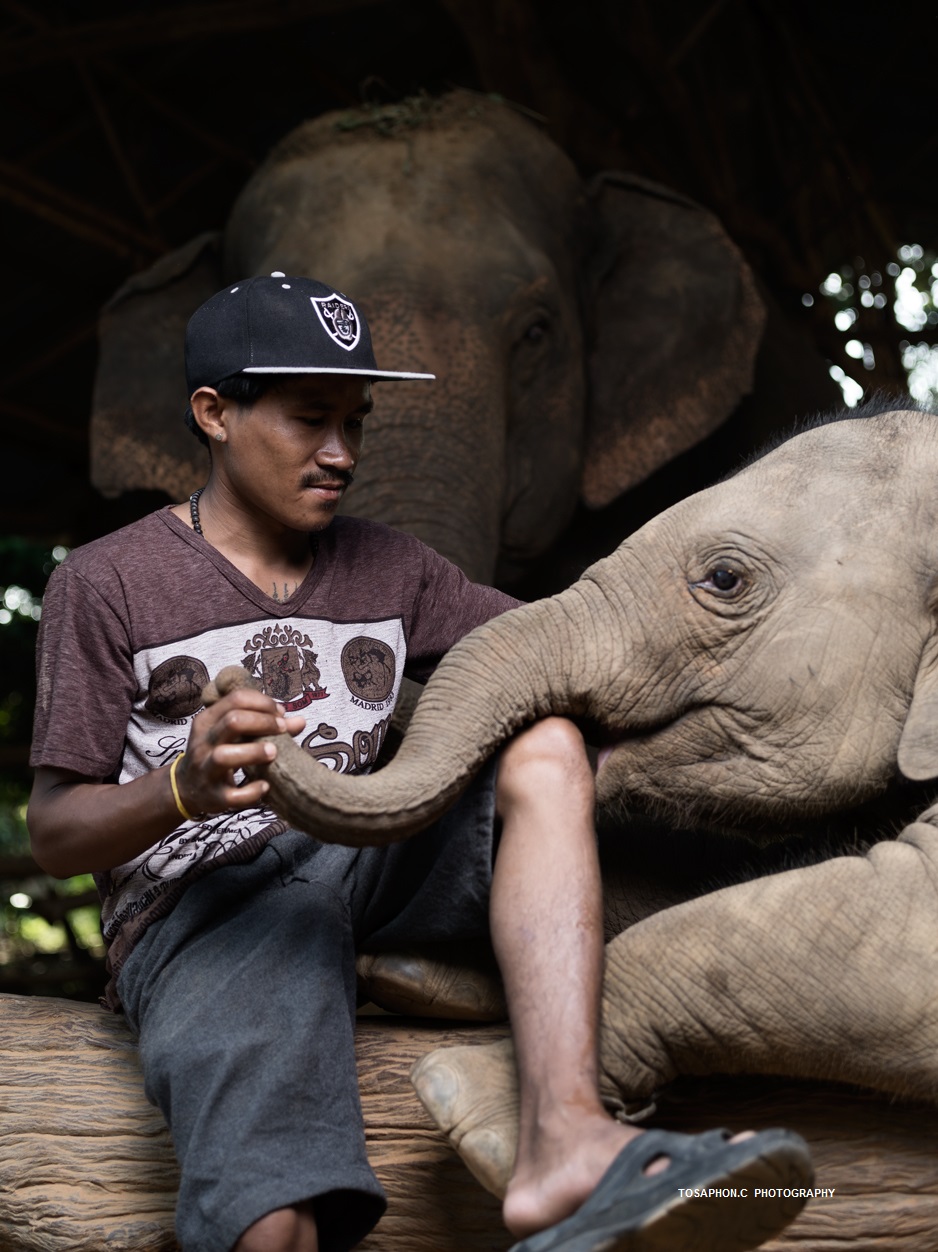
Fig.13
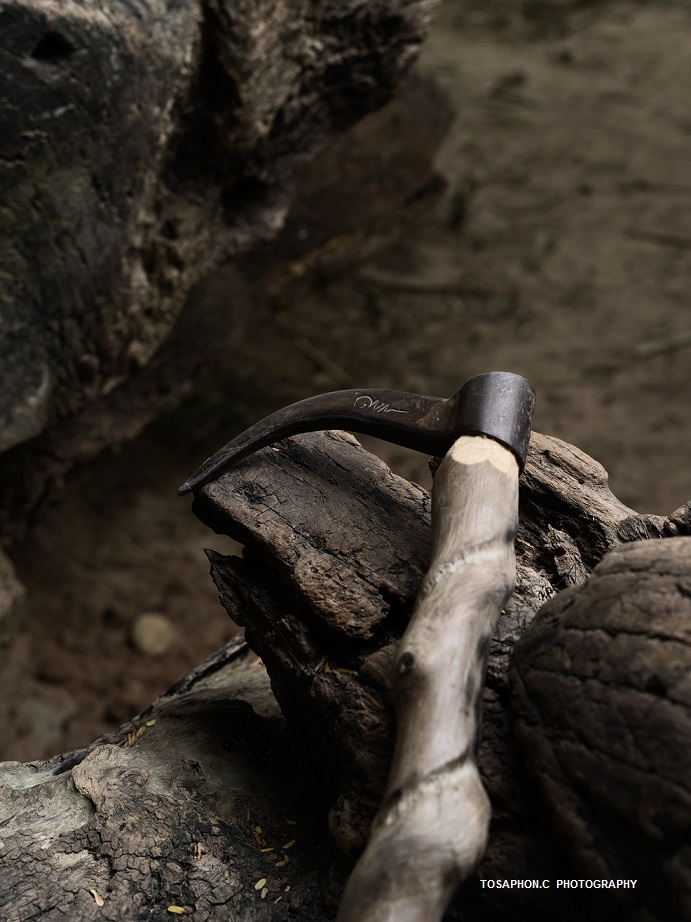
Fig.14
"The Hook" (Fig.14-15) a tool that you might think it is a torturing instrument, you are not truly correct. This is actually a tool that is used for training and controlling elephant. Like it or not, elephant are still wild animals. Trainer has to use the tool in order to make elephant controllable. Shouting or using bare hands can only make them understand simple order like moving forward or turning around. However, the tool is still a last resort. Sometimes elephant can harm people, especially tourists, and the elephant don't know that the action is right or wrong, Therefore, the trainer has to use the tool in order to warn the elephant that the action was wrong. The hook is not for everyone, there is no way you can buy them on any place, it made from solid wood attached with a very hard metal and engrave with mystic symbol. During the time of making the hook, the elder must perform a spiritual ceremony before it can be used.
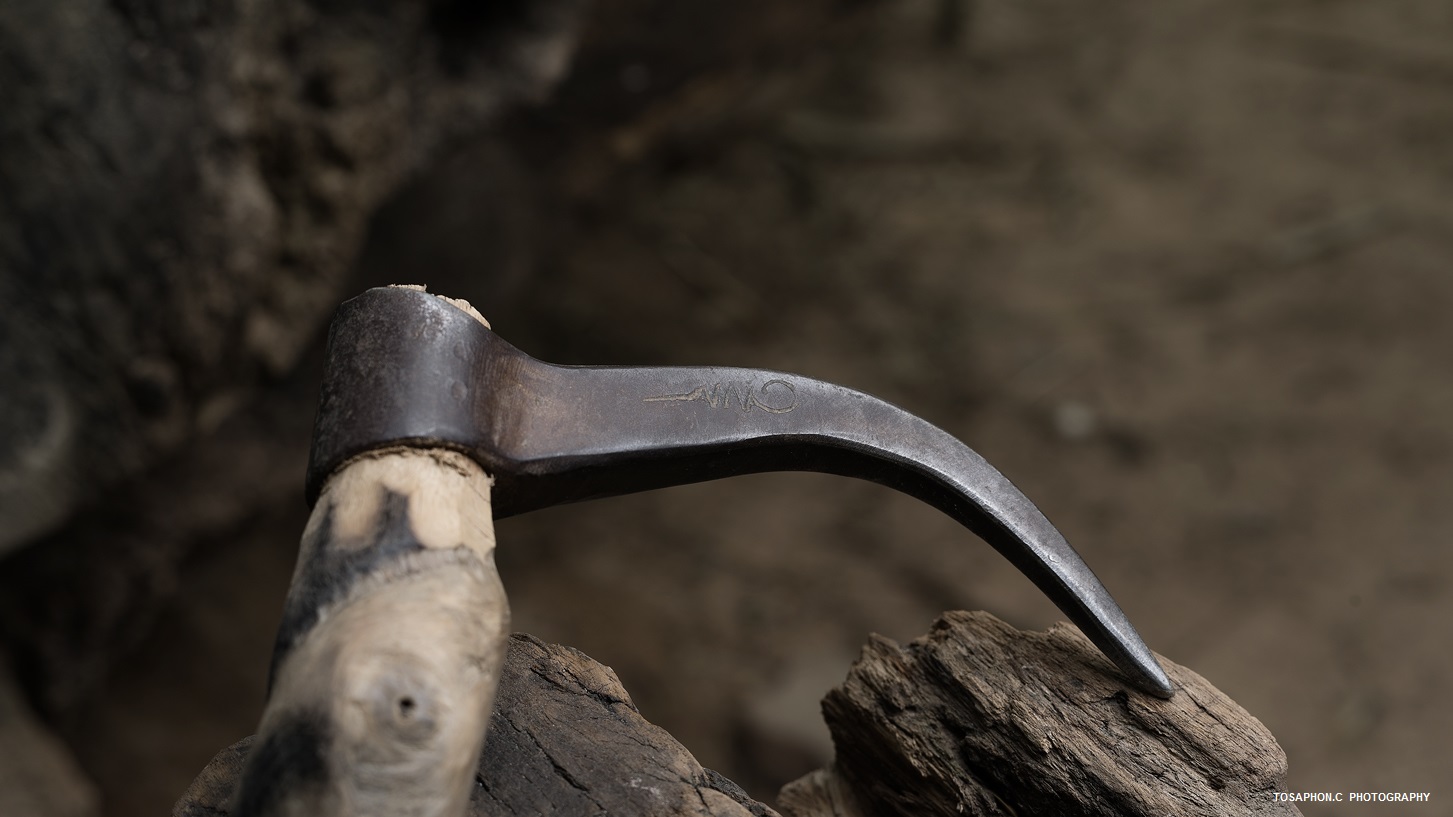
Fig.15
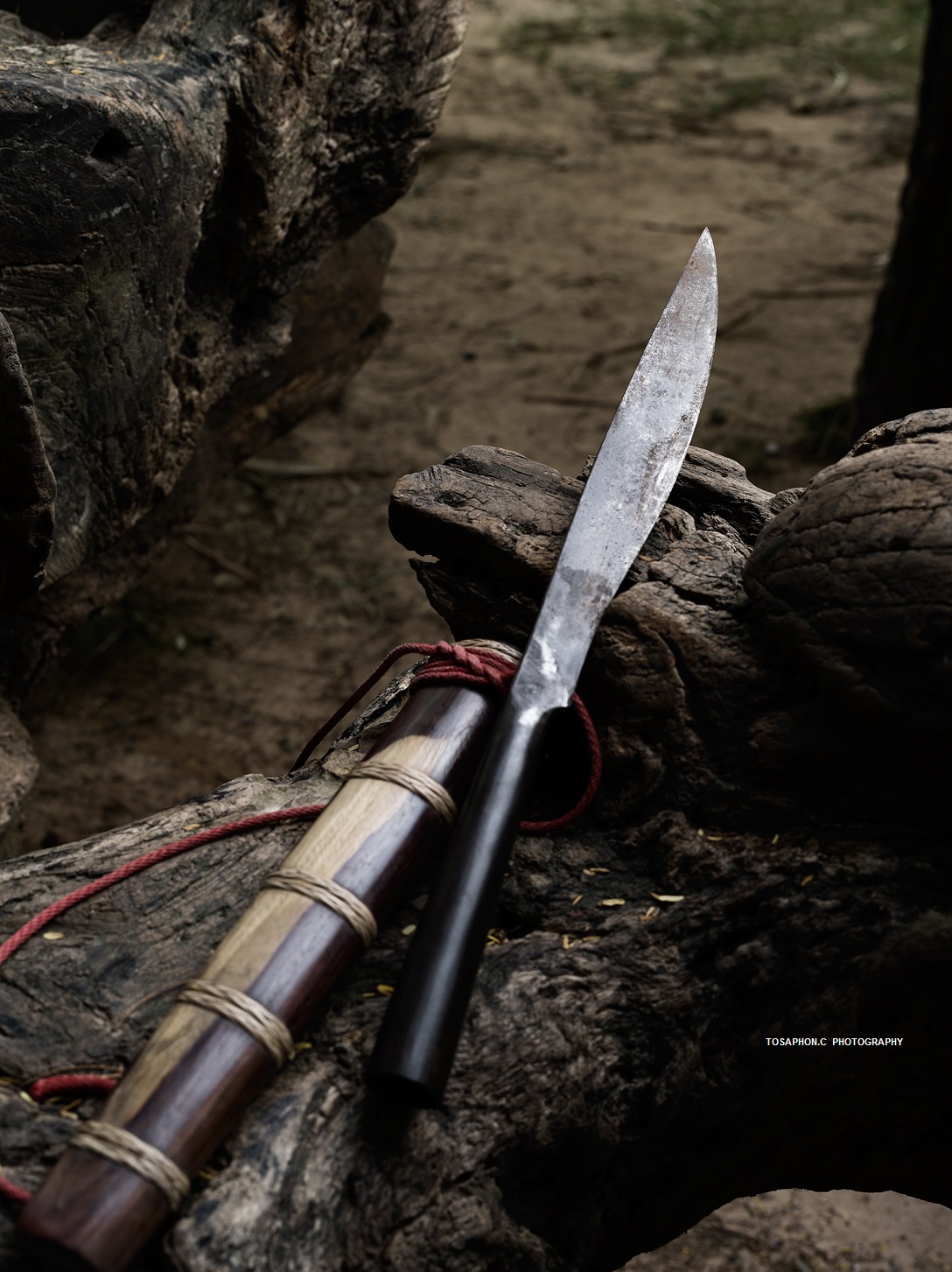
Fig.16
This blade is mainly used for cutting grass and branch,(Fig.15) but in the worse case scenario, this blade can be attached with the hook, which can be use as a weapon for protection from both wild animal and elephant itself. There is a hole on the back of the blade that fit in to the back of the hook. (Fig.17)
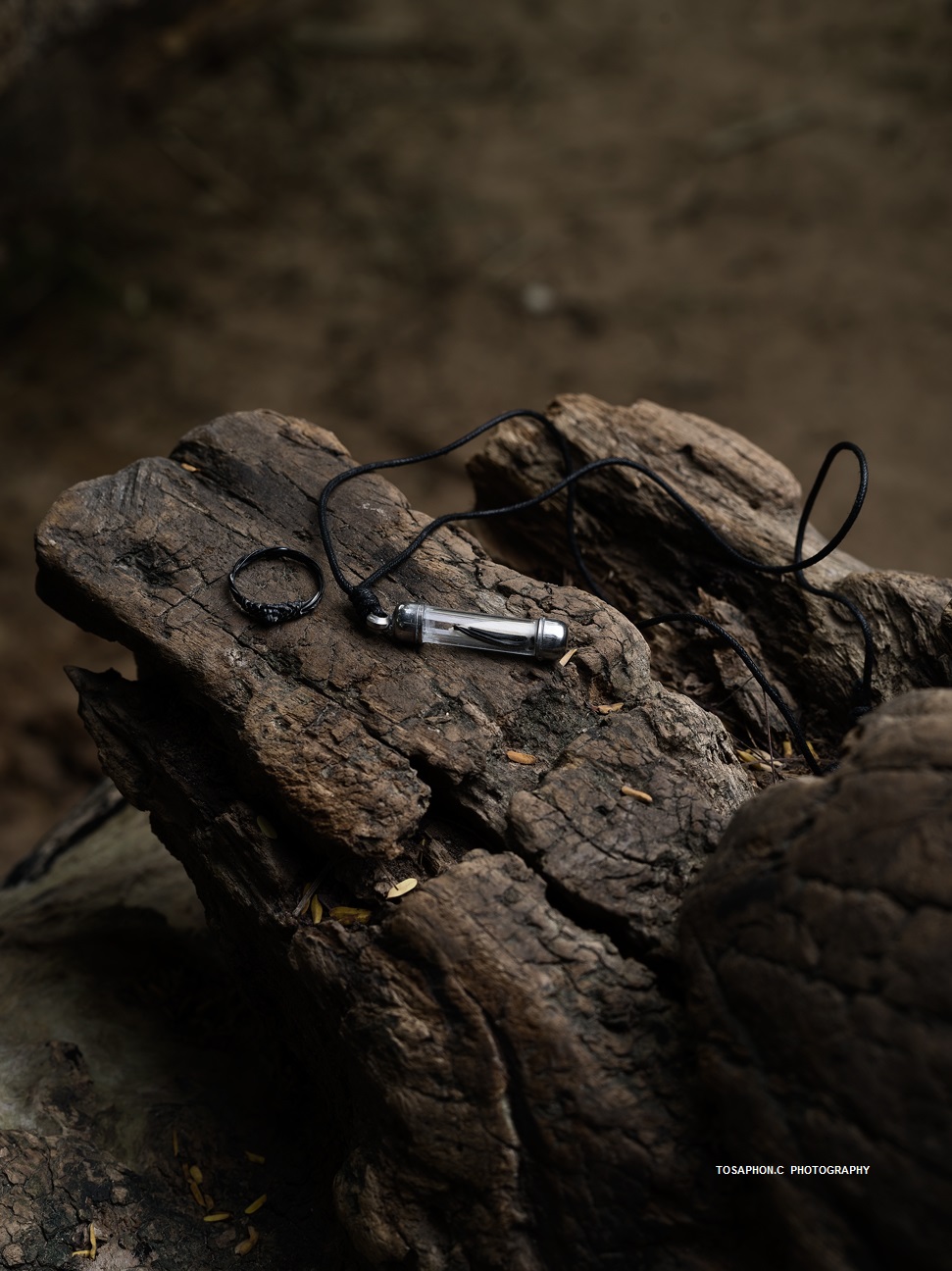
Fig.18
This is my token given by the some of the villagers. (Fig.18) The ring on the left is made from elephant tali's hair, the right one is made from a dead elephant bone, they believe it brings good luck and prevent bad sprite.
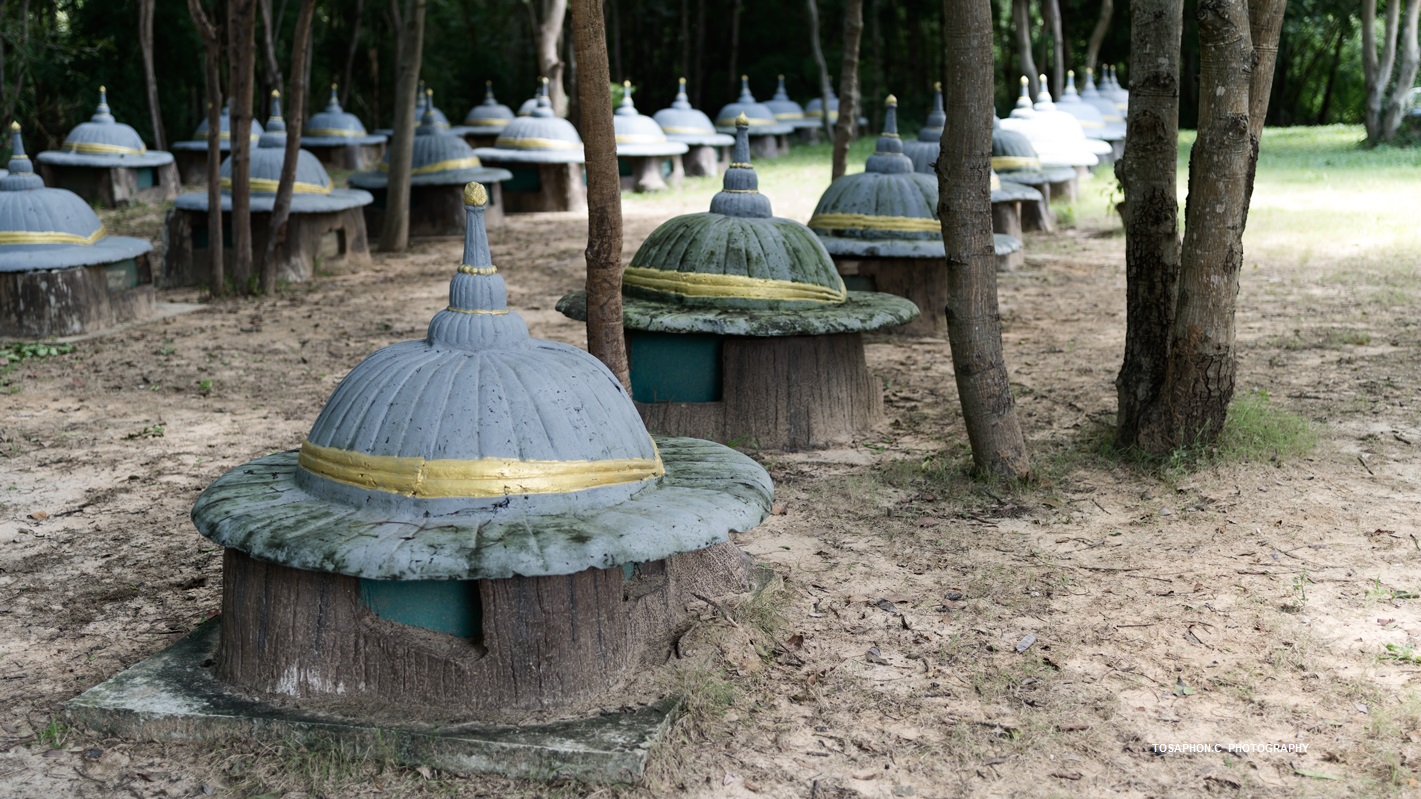
Fig.19
Elephant are like people, some die young and some live longer. This is an elephant graveyard,(Fig.18) when the time comes, they all return back to mother nature, all memories and ashes are kept and retained forever.


เที่ยวสุรินทร์ถิ่นช้างใหญ่ / เมืองไทยยังมีอะไรให้เห็นอีกมากครับ
และต่อรถเข้าไป อ.กระโพ อีก 1 ชม. ครับ
โดยหลักๆแล้วผมไม่ได้ต้องการไปถ่ายช้างเท่าไรครับ ผมอยากเน้นไปที่คนเลี้ยงช้างมากกว่า (ขนาดวันก่อนจะกลับมีลูกช้างคลอด ซึ่งน้อยคนนักจะได้เห็น ผมยังไม่ถ่ายเลยครับ) เพราะตั้งใจจะไปเรียนรู้ชีวิตคนที่นั้น และอยากคุยพบปะแลกเปลี่ยนทัศนคติ อยากรู้ว่าเขากินอยู่กันอย่างไร
ที่จริงผมเขียนไว้ใน blog ของผมไปแล้วครับยาวมากๆพร้อมกับรูปเพียบเลย แต่จะเอาลิงค์มาแปะก็จะผิดกฏ ผมเลยขออณุญาติ ก๊อปจาก blog ของผมมาวางนะครับ
Elephant People, Surin
September 24, 2014
Dear all, thanks for visiting my first story. This is also my very first travel trip alone! , I always want to travel and shoot interesting people around the world, by starting from my home, Thailand. I began to research about what place i should visit, and I decided to go to "Surin" this place is at the north-eastern of Thailand, around 450 kilometers or 6.30 hours driving from Bangkok, Surin is best known of its Elephant, jasmine rice, and silk, but people form all around the world came to visit the Elephant more than anything.
Fig.1
Surin people from the ancient time are mixed form Cambodia and Laos, this group of people are called "กูย" (Kui) or "ส่วย" (Suia) they speak mixed language (Cambodia,Laos,Thai) and their is no alphabet for which language they speak, they are also specialize in capturing wild elephant and train them to work, and perform. They rank from how many elephant they have captured, there are 3 separated ranks
1.หมอสะเดียง ( Mor sa deang )
2.หมอสะดำ ( Mor sa dum )
3.ครูบา ( Kru ba )
and don't ask me how to write the word in English, because i really don't know, haha. but the third rank is some kind of tribe elders, you have to capture more than 20 elephant, to earn this rank, which may take a life time !
But nowadays the hunt has been forbidden for more than 60 years. Sadly i din't meet the tribe elders because he was sick during my visit, ( he is 87 years old) but i had a long conversation with many elephant trainers, they are all Kui people too.
Fig.2
Fig.3
Meet "Ta Pud" ( Fig.1-3 ) He raises elephant since he was a kid, originaly born here. He traveled all over Thailand with his elephant, Pattaya, Phangnga, Samui, Chiangrai, Chiangmai, Bangkok and more, he said "Elephant are my life, my father raised them, and my grand farther as well". He traveled to perform shows and charged people for walking under and around the elephant for 59 Baht, Thai people believe this will give you good luck. right now he said "I will stay here the rest of my life, I belong here, I had travel enough."
Ta Pud also said raising an elephant are costly, they eat all day, and I really mean all day ! , if you can't find something for them to eat you have to buy it, which can cost a lot over time. They are also dangerous, yes ! , Ta Pud said lots of trainers got killed by their own elephant when the elephant are in "Rut" during that time elephant are very aggressive, the trainer must take them away before it happens and chains them very secure, Ta Pud said you will know when the time has come, they will bleed out the oil form their face and organ. Male can go rut for 2-4 months, female are less 1-3 months.
Fig.4
This is "Ta Meain" (Fig 4-6), He is know for the best elephant trainer in Surin, the wildest elephant will obey him like a dog after got trained with him.Ta Meain also born here in Surin, but traveled for work in many place. He used to sell cloth and food in Bangkok market for many years. Now he got back and lived in Surin, he has 5 elephant.
He said life in the city is cruel, everything you want you have to pay for it, when you open your eyes in the morning in the city you already need money, but not here he said. We grow rice, we grow what we want to eat, sometimes we go for fishing. He also said people in the city are hard to deal with, more than an elephant.
Fig.5
Fig.6
Elephant love to play in the water,(Fig7-10) because the weather here is very hot. Everyday the trainer took them to the river, they seem like a little kid playing and don't want to stop, haha. If the trainer doesn't come down with them, they won't come up easily.
Fig.11
The new generation of Gui people dress differently from the elder (Fig 11-13), but the bound between elephant never seems to fade away. I didn't catch his name but he is around 25 years old from what I have been told, he said he grown up with an elephant, "they are like my family" he said.
Fig.12
Fig.13
Fig.14
"The Hook" (Fig.14-15) a tool that you might think it is a torturing instrument, you are not truly correct. This is actually a tool that is used for training and controlling elephant. Like it or not, elephant are still wild animals. Trainer has to use the tool in order to make elephant controllable. Shouting or using bare hands can only make them understand simple order like moving forward or turning around. However, the tool is still a last resort. Sometimes elephant can harm people, especially tourists, and the elephant don't know that the action is right or wrong, Therefore, the trainer has to use the tool in order to warn the elephant that the action was wrong. The hook is not for everyone, there is no way you can buy them on any place, it made from solid wood attached with a very hard metal and engrave with mystic symbol. During the time of making the hook, the elder must perform a spiritual ceremony before it can be used.
Fig.15
Fig.16
This blade is mainly used for cutting grass and branch,(Fig.15) but in the worse case scenario, this blade can be attached with the hook, which can be use as a weapon for protection from both wild animal and elephant itself. There is a hole on the back of the blade that fit in to the back of the hook. (Fig.17)
Fig.18
This is my token given by the some of the villagers. (Fig.18) The ring on the left is made from elephant tali's hair, the right one is made from a dead elephant bone, they believe it brings good luck and prevent bad sprite.
Fig.19
Elephant are like people, some die young and some live longer. This is an elephant graveyard,(Fig.18) when the time comes, they all return back to mother nature, all memories and ashes are kept and retained forever.